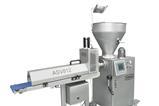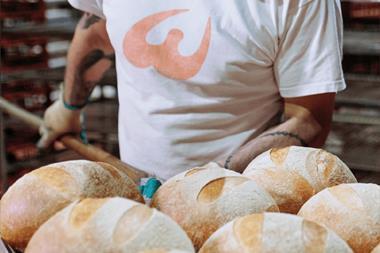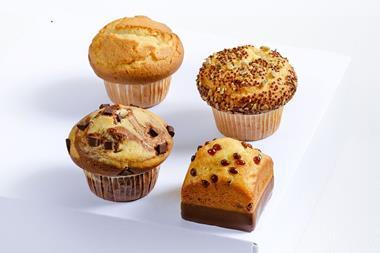The gluten-free bakery market has grown well beyond breads into a wide range of products. However, production challenges still demand a flexible approach and efficient equipment to succeed.
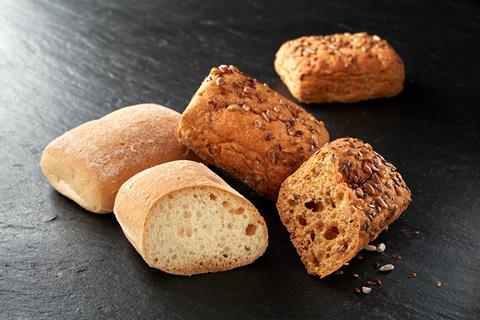
From the days when gluten-intolerant consumers had to suffer the most basic in starchy breads, the gluten-free market has moved on considerably and, with it, the diversity of gluten-free products now created.
As a recent article in British Baker pointed out1, a decade after the gluten-free trend took off, products are increasingly ‘gluten-free plus’, as in a discretionary market beyond the core coeliac community, they have to justify their premium over standard bakery products, particularly during a cost-of-living crisis.
That said, predictions for continued growth in gluten-free food and beverages reveal a forecast CAGR of 6.2% in the UK during 2020-20272 , as the increased consumer focus on health & wellbeing continues to lend its weight to the category. Ambient bakery products were claimed to make up £43.7m of the market in 20203, up 7.6% from the previous year, with the heaviest 2% of shoppers in gluten-free accounting for 35% of category spend4 and the top 20% accounting for 85%5, according to The Grocer’s 2022 Guide To Free-From & Plant Based supplement.
Gluten-free product variety
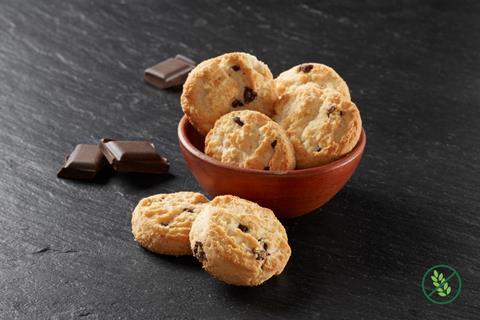
Although bread is the biggest sector in gluten-free, sweet and savoury snacking is growing in importance and the sheer variety of products that can now be acquired is evidenced by the development of businesses such as Warburtons Gluten Free, now the biggest brand in the sector6, which offers rolls, toasties, wraps and crumpets in addition to its broad variety of gluten-free bread options.
That the quality and variety of gluten-free options has progressed is indisputable and this is, in part, down to the doughs handling “more like standard doughs”, explains Ed Hewitt, director of sales at equipment manufacturer Reiser UK. “Products have developed to where there are a lot more similarities between gluten-free products and what you might class as standard bakery products,” he says. “Going back in the day, the dough tended to be more like a batter. But the improvements in ingredients as well as processing have helped in terms of the handling and look of the products.”
He points to a boom in gluten-free products about four to five years ago, with investment coinciding with new types of dough and the latest in product and recipe developments. At that stage, many bakery businesses invested in systems to process the trickier doughs.
However, gluten-free products still pose a challenge in terms of dividing and portioning, due to the stickiness of the dough and awkwardness of handling. That can prove problematic for systems that are used to handling standard doughs, says Hewitt. “That’s probably where Reiser has found its niche in the market – by offering equipment that can cope with a wide variety of doughs in terms of their consistency.”
Moreover, the holy grail of gluten-free production has not yet been discovered. Writing in ResearchGate earlier this year, Y. L. Dar noted: “Several technical factors related to product functionality present a challenge for gluten-free product development. Many gluten-free native flours and starches, modified starches and gums are being used in gluten-free formulations. However, these gluten-free baked products typically differ in flavour, texture and appearance from their wheat-containing counterparts.
“To date there is still no one set of ingredients that can be used as a direct wheat flour replacement – an optimal wheat flour replacer still needs to be discovered or developed. Currently, the closest approach is the use of a combination of modified or functional native starches or flours, including fibres, proteins, and hydrocolloids as co-texturisers and nutrition supplements7.”
Now, with increased demand for gluten-free products to achieve greater consistency in quality, appearance and shelf-life, the equipment used to produce them needs to adapt accordingly. Bakeries, particularly smaller businesses, need the flexibility of being able to change to different dough types, given the fact that gluten-free bakery products still account for a relatively small part of the overall UK bakery industry of £4.4bn8.
How equipment can help

When it comes to Reiser, that change could be as simple as a double screw or attachment swap-out on its Vemag portioner/divider, which is simple and easy to do, says Hewitt. “What we also see is the use of different types of belting that allows product release. For example, we might use on-belt oiling. Or it could be a case of using shuttling systems that automatically put the dough into tins. Automation in gluten-free is very popular as the less you have to handle the product, the better,” he says.
As well as creating standalone systems for bakers, Hewitt says it’s now important for Reiser’s equipment to be able to work with and around other OEMs. “So, for example, we might have the best dividing kit, but someone else might be taking on the handling of the tins afterwards. This allows customers to discover best-in-class for handling gluten-free dough and then feeding into another piece of kit.”
For smaller bakery businesses, equipment used could be as simple as a single guillotine cut-off, a bakery portioning table which is designed to be semi-automatic, or new attachments such as dosing lips. “At the smaller end of the market it’s a case of offering simple, easy-to-operate,easy-to changeover and highly flexible systems,” notes Hewitt.
“Going up from there, you’re looking at multiple lane systems for products such as rolls, hot cross buns or cookies, where they might be fed into trays – then, it’s a case of higher-speed lines with more industrial dough dividers/portioners, which we would attach to our Vemags. The Vemag’s unique double screw system provides accurate dough pieces , so that we are achieving the best possible efficiency for the baker. Gluten-free, by its nature and due to the ingredients within it, is generally more expensive, so bakers are looking to get value for money. In the more industrial bakeries, the use of the Vemag process check,weighs each portion, feeds this information back directly into the Vemag which in turn will adjust the piece weight automatically and so reduces giveaway.”
The other important element to consider is consistency in terms of temperature and mixing, as any variation does affect the dough quality, says Hewitt. “It’s about gentle handling. We have the ability to control settings in the Vemag – in terms of both the infeed on the hopper and then another independent feed for the double screw. This allows us to maintain the structure of the dough and any inclusions.”
While shelf-life has traditionally been a challenge for producers of gluten-free products, Hewitt says there is now a variety of packaging methods that can help extend that life. “Manufacturers might be looking to gas flush in a modified atmosphere packaging (MAP) or use a flexible vacuum pack, which is where we would recommend our Variovac thermoformers,” he says. The machine range is designed for all sizes of business,with flexibility, simplicity and speed as a standard.
The gluten-free market started out mainly as bread and rolls, but has evolved to be much more than that and Reiser has found its equipment has needed to evolve in line with customer demands, says Hewitt. “We regularly develop product and process in partnership with the customer using the Reiser and Vemag bakery specialists. They work closely with the customer to determine best practice for producing their products.
To view more on Reiser’s equipment for gluten-free bread and buns, see the video below:
To find out more about Reiser’s gluten-free bakery equipment, please call 01908 585300 or email salesuk@reiser.com.
Source
1 https://bakeryinfo.co.uk/ingredients-reports/how-bakers-are-growing-the-gluten-free-menu/673424.article
2 https://www.mordorintelligence.com/industry-reports/united-kingdom-gluten-free-foods-beverages-market-industry
3 https://treeoflife.co.uk/whats-hot-gluten-free-bread/
4 IRI, Top 5 Retailers, Total Gluten Free, 52 w/e 01.01.22
5 Kantar, Total Gluten Free, 52 w/e 26.12.21
6 Nielsen Scantrack, EPOS data to 16.07.22
7 https://www.researchgate.net/publication/275263650_Advances_and_Ongoing_Challenges_in_the_Development_of_Gluten-free_Baked_Goodsupplements.
8 https://www.fob.uk.com/about-the-bread-industry/





















